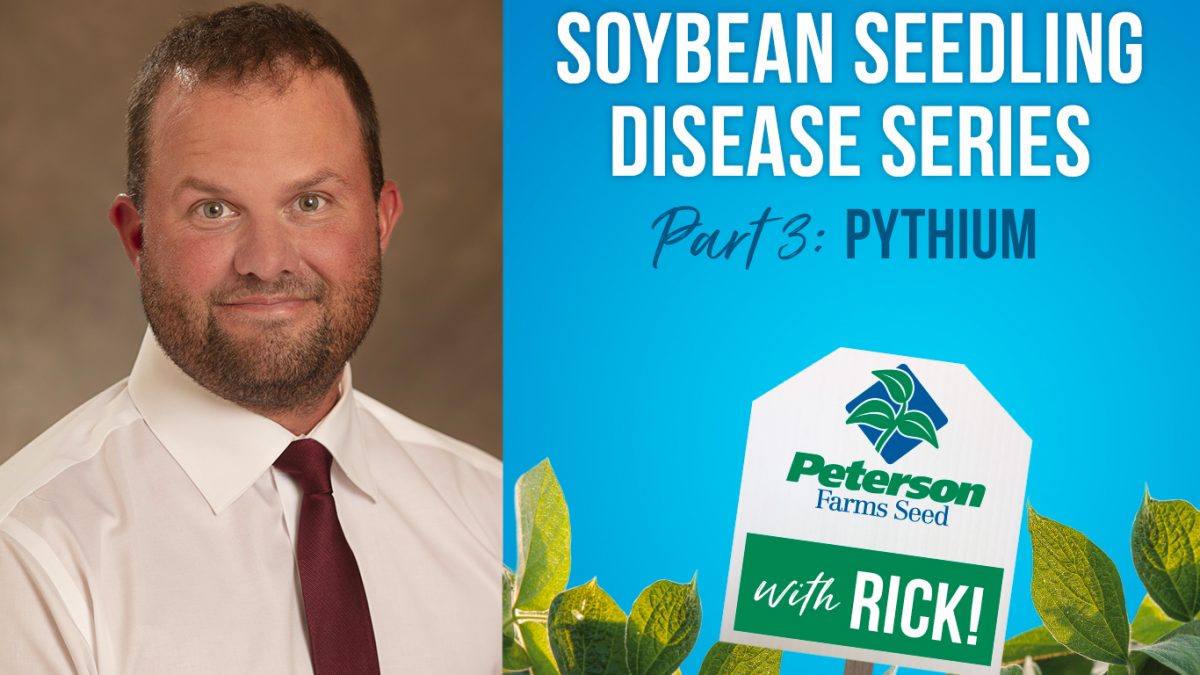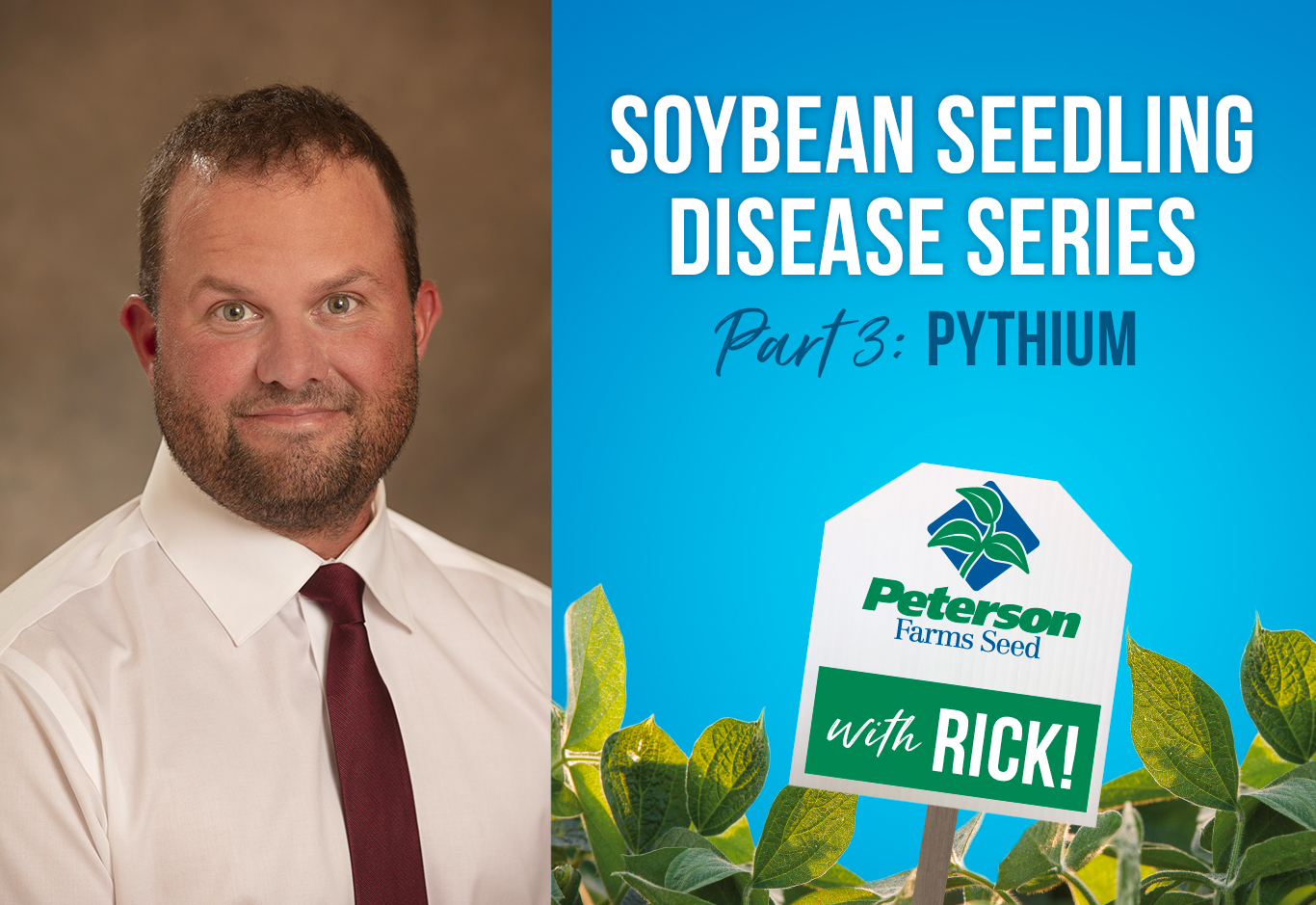Soybean Seedling Disease Series Part 3: Pythium – The Seedling Killer

We’re breaking down the top four soybean seedling diseases plaguing farmers in ND, MN and SD: Phytophthora, Rhizoctonia, Pythium and Fusarium. We’ve covered Phytophthora and Rhizoctonia. Today we’ll focus on what contributes to Pythium and what you can do to manage it.

Pythium Facts
- In the Midwest, Pythium has been found to be pathogenic in both corn and soybeans.
- Infections begin soon after planting.
- More than 30 different species are known to cause problems in soybeans.
- Pythium has a very wide range of hosts including many weed species.
What Does Pythium Look Like?
- Most known to cause stand establishment problems.
- Cool, wet soil conditions are most often the cause of infections, especially saturated soils when the young seedling is under oxygen stress.
- No known crops have resistance to the disease.
- Pythium and Phytophthora are closely related and are most often found in periods of excess moisture in the soil.
What Can You Do About Pythium?
- Fungicides like Metalaxyl and Azoxystrobin have shown “consistent economic return” when applied to fields prone to Pythium. (source: Compendium of Soybean Diseases)
- Because cool, wet soils favor infections, “Growers should avoid planting when soil will be cool and wet for a few days, because such conditions favor the development of the seedling disease.” (Source: Compendium of Soybean Diseases)
- The most effective management of this disease is the investment in quality seed treatment formulated to address these pathogens.
There is a long list of diseases waiting throughout the season to take down your yields. An investment in seed treatment protects a soybean variety’s maximum yield potential.
If you have questions about what you’re seeing in your fields, seed placement or seed treatment, drop me a line at Rick@PetersonFarmsSeed.com.
Ready for more? Check out Part 4: Fusarium– The Dry Rot











